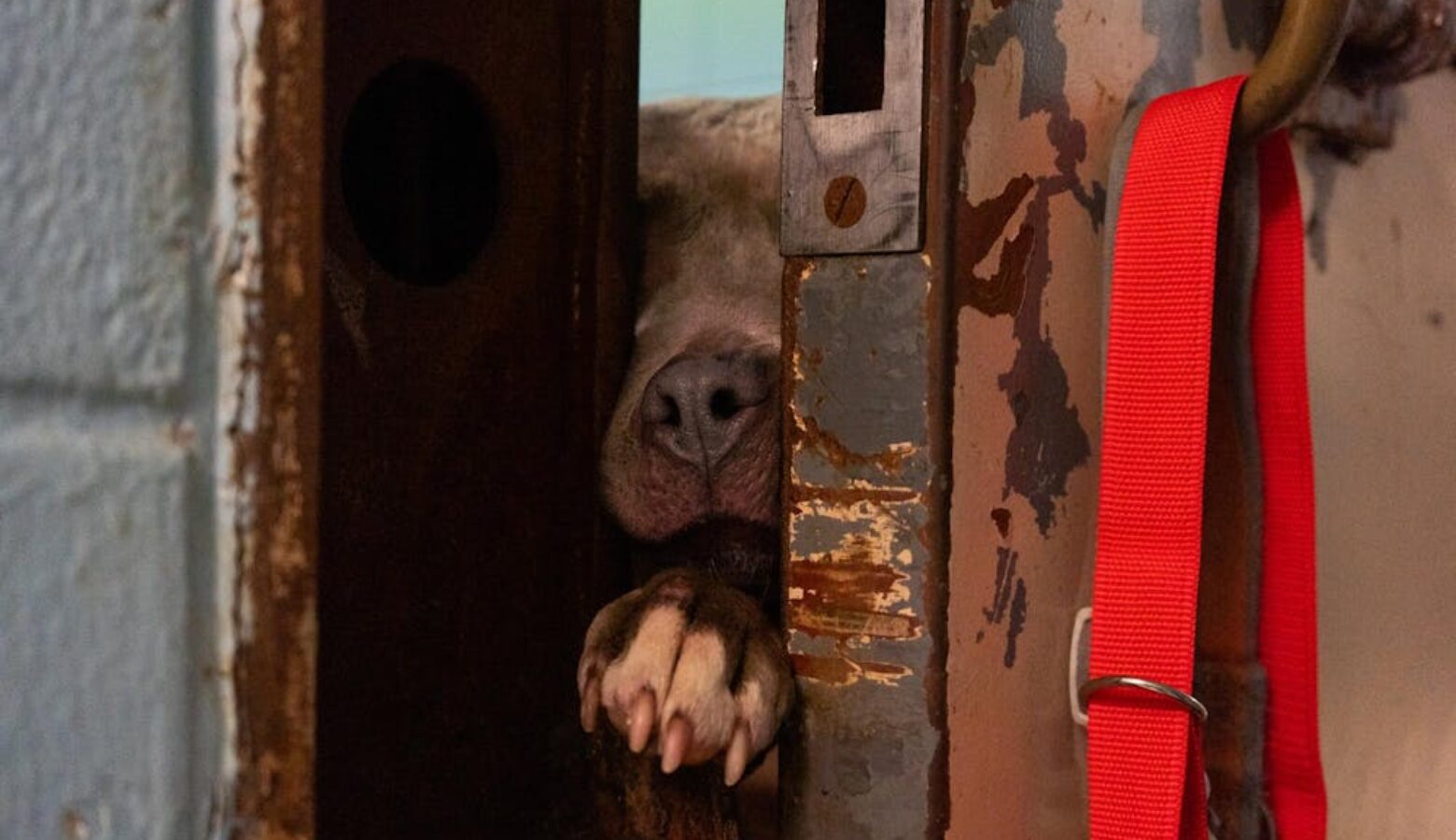Muncie Animal Care and Services shelter is at capacity

Six-and-a-half million cats and dogs entered shelters and rescues across America in 2023, according to Shelter Animals Count (SAC), a national database dedicated to sharing data that impacts animals and communities.
The average length of stay for dogs in the U.S. has increased, with larger dogs remaining in shelters the longest, averaging 20 days compared to just 14 days for smaller dogs, according to SAC. As a result, dogs of all sizes are waiting longer for new homes, which limits the capacity of shelters.
The Best Friends Animal Society (BFAS) found in a 2024 report that while some shelters have experienced an uptick in dog adoptions, others across the nation are still experiencing pressure and overflow. This has a direct impact on animals being put down.
The BFAS found that the number of dogs euthanized in shelters increased by five percent in 2024. The number of dogs euthanized in shelters is rising because of a nearly six percent increase in dogs taken in, transferred or returned to shelters.
In other words, there are still more animals coming into shelters than being adopted.
Joshua Taulbee, director of Muncie Animal Care and Services (MAC), has only been in his role for a handful of months but has seen shelter overcrowding firsthand. He said that due to an increase in the cost of living, it’s a struggle for animals to be adopted. Its also been difficult for him and his staff to maintain their facility and animals in their care.
In a 2021 survey released by the Pet-Inclusive Housing initiative, 72 percent of respondents said pet-friendly housing was hard to find, while 59 percent of respondents said that pet-friendly housing is just too expensive.
Taulbee runs the MAC in a former jail. Though they retrofitted the building 10 years ago, Taulbee said, making a shelter in the space creates difficulty at times. The Ball State Daily News took a tour around the facility, led by Taulbee, and was able to get a look at what the general public does not see.
Behind the adoption rooms, there are dogs with behavioral issues housed in makeshift kennels made out of old jail cells. In a separate room dedicated to sick cats and kittens, crates are stacked nearly to the ceiling.
When a shelter becomes overcrowded, it’s difficult to maintain the high standards of hygiene that MAC wants, simply because they have animals everywhere. Taulbee said, despite the challenge, his staff works hard to maintain the facility and its care.
“I have ordinances. I have to provide life-saving care for these animals, and that’s what we want to do here anyway,” he said. “We’re just kind of having to take it and work with what we can and do what we can within our means while also providing the best amount of care for all the animals that come into our shelter.”
Taulbee said the MAC usually houses over 300 animals at a time. The shelter’s capacity is “106ish” dogs, while during kitten season, the shelter houses around 250 cats. Last year, MAC hit a high of “around 400 to 350” animals in the shelter.
Though the COVID-19 pandemic reached its peak years ago, shelters like the MAC around the country are clearly still feeling the effects.
According to 2021 data from the American Society for the Prevention of Cruelty to Animals, nearly one in five American households adopted a cat or dog during the pandemic. Consumer spending on pets increased between 2020 and 2022, especially among higher-income households, as reported by the American Veterinary Medical Association.
Once the pandemic-adoption boom cooled down, pet owners were returning their dogs to shelters for a variety of reasons. Now, the shelters are back where they started pre-pandemic.
“We’re always kind of at capacity … We’re stacking crates three high. If there’s a place, we put the dogs there,” Taulbee said. “… I don’t know if we’ll ever drop under 90 dogs at any time. Very rarely are we dropping under 100 [animals] in the last eight months. We’re used to it.”
MAC is a government-run/municipal shelter, meaning the facility is run by the Muncie government on taxpayer money.
Dr. Melissa Justice, director of small animal health programs at the Indiana Board of Animal Health (IBAH), said public shelters like the MAC “probably have a lower supply” of money versus a privately owned shelter. Additionally, they may not have a lot of control over what goes on in their shelter.
“If a [private shelter] wants to treat every single animal that comes in by asking for donations or ‘whatnot,’ they have the ability and the autonomy to be able to do that within their own group,” she said. “Publicly owned shelters may be a little bit tougher to be able to independently make those decisions because, a lot of times, they may have standard operating procedures on how the funding agency wants them to run those shelters.”
IBAH handles various operations on a day-to-day basis, including regulating diseases of concern based on recommendations from the federal government.
The organization also has the authority to assist local law enforcement with their investigations into cases of animal hoarding, animal neglect and animal abuse. Justice said a lot of times, local authorities who run the animal shelters will investigate suspected cases of animal neglect or animal abuse, and they’ll call IBAH veterinarians in to provide a professional opinion.
Justice said it is important for Hoosier communities to recognize the process that goes into their local municipal shelters’ decisions. Sometimes, a shelter will be over capacity, yet it will still have to find somewhere to house an animal.
Additionally, Justice said no-kill shelters like the MAC, which also acts as Muncie’s Animal Control, face a different layer of pressure.
“There’s an intense pressure from the public now to reduce the number of animals that are being euthanized in shelter situations,” she said. “Everybody wants to have low-kill or no-kill shelters. I think from our mind, that’s what we want best for animal welfare, but the problem is, if we’re not adopting out those animals, then we’re also going to create overcrowded situations.”
For Taulbee, a solution to help ease overcrowding is for Muncie locals to spay and neuter their pets, leading to a reduction in the population of animals in the community. He said it’s common to have a pet come in and need the procedure done, although it is “much cheaper to deal with at the beginning” process of adopting an animal.
Justice recommends volunteering at your local shelter. She said in order for shelters to run smoothly and still be low- or no-kill, they need help from the community. The MAC allows volunteers to come in and walk dogs during operating hours. Taulbee said they are also always looking for help cleaning the facility or temporary fosters. He said this issue is not just one at the MAC or in Delaware County, but for neighboring counties across the state.
“Everyone’s really facing shelter overcrowding, whether it’s us, whether it’s nonprofits, it’s happening everywhere,” Taulbee said. “In a city like Muncie, you know, with Ball State [where] I think we have around 76,000 people, it just exacerbates the issue.”
Contact Trinity Rea via email at trinity.rea@bsu.edu or on X @thetrinityrea


